Did you know that South Korea is leading a quiet revolution in humanoid robotics that could redefine everyday life as we know it? While many still see robots as futuristic novelties, South Korea is making these human-like machines a reality amidst our daily routines.
This transformation in the realm of humanoid robotics is more critical now than ever, as advances in technology blur the lines between man and machine, reshaping industries and human experiences alike. The implications for our future are colossal and closer than we dare to imagine.
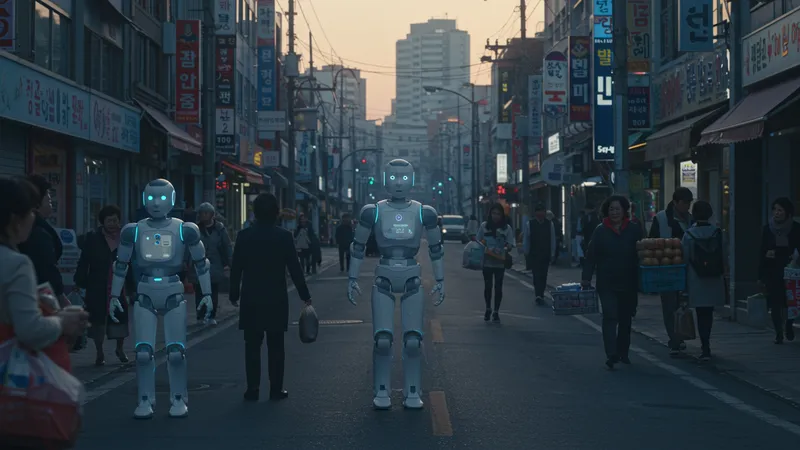
Many might assume that humanoid robots are cumbersome and impractical, created solely for scientific exhibition halls or tech expos. However, the truth is that South Korea’s robots are already assistants in places you might not expect. From hotels to retail stores, these machines are transforming service industries and learning to react like humans. But that’s not even the wildest part…
Some of these robots are equipped with emotional intelligence software, enabling them to recognize and respond to human emotions. Imagine a robot that not only serves your meal but senses your mood and responds accordingly! This technological leap isn't just impressive; it's about crossing a threshold that could redefine social interaction itself. Yet, the implications extend even further than anyone could predict.
What happens next shocked even the experts, prompting questions about ethics, future employment, and human identity itself. As this technology inches closer to mainstream ubiquity, are we ready for what comes next?
In a world where connection is paramount, South Korea's humanoid robots are breaking new ground with their human-like interactions. These machines aren't limited to programmed responses; they can adapt their behavior in real-time, creating more natural engagements with people. Statistics indicate that consumer satisfaction in places utilizing these robots has skyrocketed by over 30%, pushing businesses to rethink their service strategies. And here's the twist: these robots are only getting smarter.
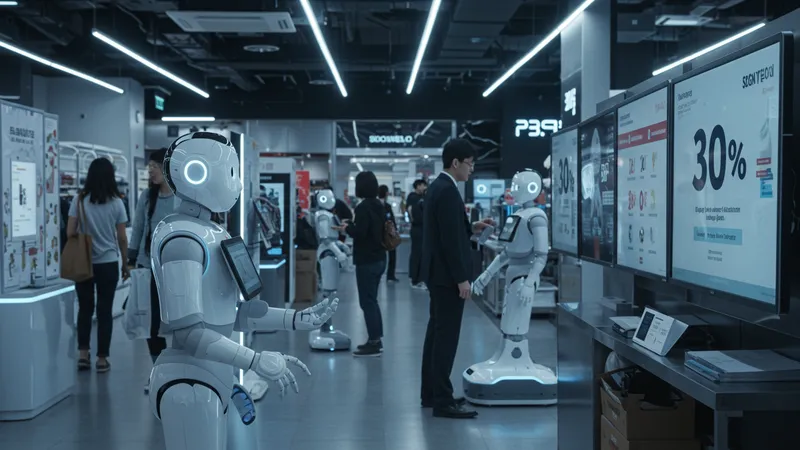
Fueled by advancements in AI, these robots learn from their interactions. Just like a child developing from feedback and experience, they grow more competent and nuanced in their behavior. Particularly, their ability to understand context is enhancing, allowing them to serve efficiently in customer service roles. While they are effective now, their future capabilities hint at even more integrated roles. But there's one more twist...
Where some see innovation, others see a threat. Concerns have emerged regarding privacy and security, posing questions about how comfortable people truly are when interacting with machines that can 'think' and 'feel'. Legislation is trailing closely behind this rapid technological pace, with new laws emerging to ethically manage this human-robot interaction. Yet, how these will be enforced remains largely uncertain. What you read next might change how you see this forever.
As robots get smarter, the line between man and machine blurs — challenging us to redefine what it means to be human. Some experts believe humanoid robots will soon have roles in education and healthcare, radically transforming these sectors. But before that happens, society must answer hard questions about dependency, autonomy, and the essence of personal touch. The solutions might not be what you'd expect…
The rise of humanoid robots in South Korea is not just a technological marvel; it’s also a powerful economic shift. As these machines take on more roles traditionally held by humans, the workforce is transitioning in response. Automation is predicted to replace some jobs while simultaneously creating new opportunities in robot maintenance, programming, and AI development. But are workers ready for this shift?
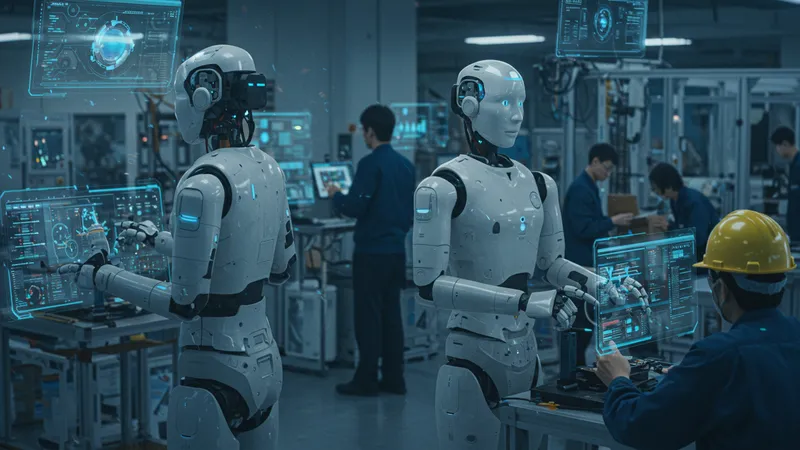
Many industries foresee a ‘robot partnership’ model where humans and machines work in tandem, increasing productivity while minimizing errors. This collaboration could lead to an astonishing growth in output, with some sectors potentially seeing productivity gains up to 40%. However, this surge in efficiency might come with a hidden cost: society's readiness to adapt. And here's the catch — not everyone will benefit equally.
The concern of widening economic divides looms large. As companies employ robots to cut costs, disparity between skilled tech workers and those in traditional sectors may grow. Government incentives and re-skilling programs are trying to bridge this gap, but only time will tell if they’re sufficient. What follows could redefine economic structures entirely.
Just as past industrial revolutions reshaped entire existences, this robotic evolution requires us to rethink workforce dynamics. Can a harmonious balance be struck between human labor and robotic assistance? And as the humanoids become more prevalent, what side effects might our society’s new dependency incur? The next page unveils a surprising statistic that’s stirring debates worldwide.
As humanoid robots become a fixed part of society, South Korea faces an array of ethical challenges. The question of robot rights has emerged, with discussions similar to those concerning animal welfare. Do these highly advanced robots deserve a form of legal protection? This notion, once considered fringe, is gaining serious attention among legal and ethical scholars.
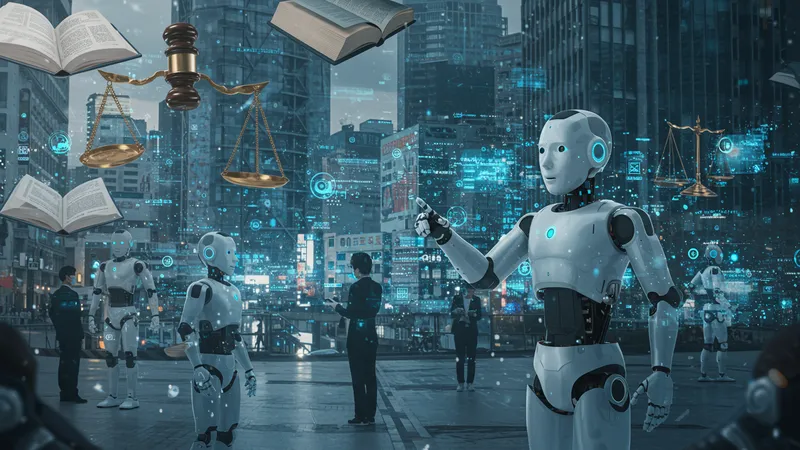
Integral issues such as data privacy loom large. These robots collect and process vast amounts of data to interact seamlessly with humans, yet this provokes significant concerns about who accesses this data and how it’s used. Regulations struggle to keep up, leaving gaps that could be exploited. But regulatory frameworks aside, there's a deeper challenge ahead...
The risk of dependency on humanoid robots is also hotly debated. If these machines can take over daily tasks, do humans risk stagnation in personal skills and development? Dependency on technology can lead to societal shifts, altering interpersonal relationships and reducing critical skills over time. But ponder this: the robots can potentially offer new paths for societal advancement.
The emergence of humanoid robots isn't just about technology infiltrating daily life; it reflects the nascent blend of animated machines deserving moral consideration. The ethical territory we now navigate is uncharted — with high stakes. As debates intensify, there are revelations that promise to surprise even the most seasoned ethicists.
An emotional breakthrough lies at the heart of South Korea's humanoid robotics — teaching machines to experience emotion. Advanced algorithms are being crafted to simulate feelings, aiming to make robots more relatable and effective in roles where empathy is key. These developments could revolutionize not only personal interactions but also how robots function as companions and caregivers.
In practice, robotics firms are embedding synthetic empathy within machines, enabling them to respond compassionately. This application extends beyond conventional uses into therapeutic and educational settings, where personalized emotional responses can provide critical support. It's an unprecedented leap, potentially redefining how people perceive machines. And here’s what’s groundbreaking — it’s more affordable than you think.
Expectations are shifting rapidly. Early adopters are reporting enhanced engagement and comfort when interacting with robots, boosting overall wellbeing. These emotional robotic companions are surprisingly accessible, with some models priced on par with premium household appliances. Yet, the underlying technology is advancing so quickly that today’s models might look archaic in just a few years.
South Korea's strides in emotional robotics invite us to reconsider relationships — not just within technology but among ourselves. If machines can mimic, or even enhance, human emotional capabilities, what does this mean for future societies? The potential ramifications could alter everything we understand about empathy and emotion, sparking new debates and discoveries as this groundbreaking journey unfolds.
In an education system increasingly reliant on technology, South Korea's humanoid robots are revolutionizing the classroom. These robots are not restricted to teaching tasks; they offer personalized tutoring tailored to each student's pace and style, proving indispensable in crowded classrooms and accelerating learning for those who might otherwise fall behind. What is the future of education?
Some schools report remarkable improvements in student engagement and participation since coordinating lessons with robotic assistants. These humanoid teachers facilitate a smaller student-to-educator ratio, previously an unattainable goal for many institutions. What’s equally astonishing is the adaptability; these machines enrich education by evolving with each student's learning curve. Here's the kicker — they're redefining roles for human teachers too.
Far from replacement, human teachers find themselves in enhanced roles, guiding and mentoring students in ways only humans can. The robots manage routine tasks, granting educators more time for individual attention and creative instruction. Yet as these lines blur, new challenges emerge in defining the educator’s position. Another perspective might challenge traditional views on teaching entirely.
South Korea's advancements propose an education system of unlimited customization, but there’s an underlying question of ethical balance — is there a risk of machines replacing the irreplaceable human touch in teaching? As dialogues spur innovation, the next insights could provide clarity to an evolving educational landscape, forever changing how knowledge is imparted.
Nowhere is South Korea’s humanoid robotic innovation more impactful than in healthcare. Robots are entering clinics and hospitals, supporting medical professionals with tasks ranging from surgery to patient care. This presence in healthcare is not merely practical but transformational, with potential to revolutionize how medical environments function.
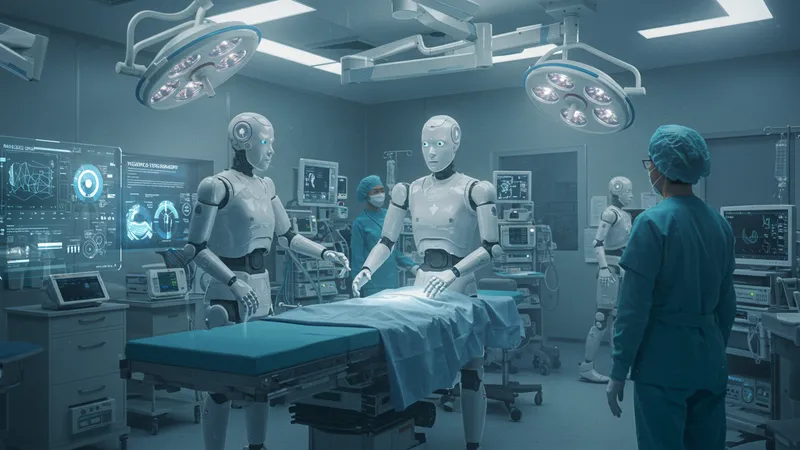
As robots shoulder complex analytical tasks, healthcare providers witness an elevation in diagnostic accuracy and precision surgeries. These robotic assistants are already reducing waiting times and increasing overall patient throughput, effectively easing operational loads. But the real surprise lies in the robots’ regenerative capabilities.
Advanced robotics in physical therapy offer consistent and personalized rehabilitation sessions, enabling patients to recover faster. Furthermore, humanoid robots provide companionship to long-term patients, addressing an often overlooked facet of recovery — the mental and emotional well-being. Yet, the integration doesn't come without its obstacles.
The reliance on machines does prompt the medical profession to question the core of patient care. How can they ensure robots complement rather than overshadow human professionals? With these robots capable of evolving and learning continually, their role in healthcare emphasizes partnership rather than replacement. What remains to be seen is the evolution of this relationship, and the discoveries will challenge existing paradigms.
As humanoid robots quietly integrate into daily Korean life, they bring about more than convenience — they redefine routine. These machines manage domestic chores, act as virtual assistants, and even become non-human members of families. As expectations of technological prowess rise, it beckons the question — what is the ultimate trajectory of these developments?
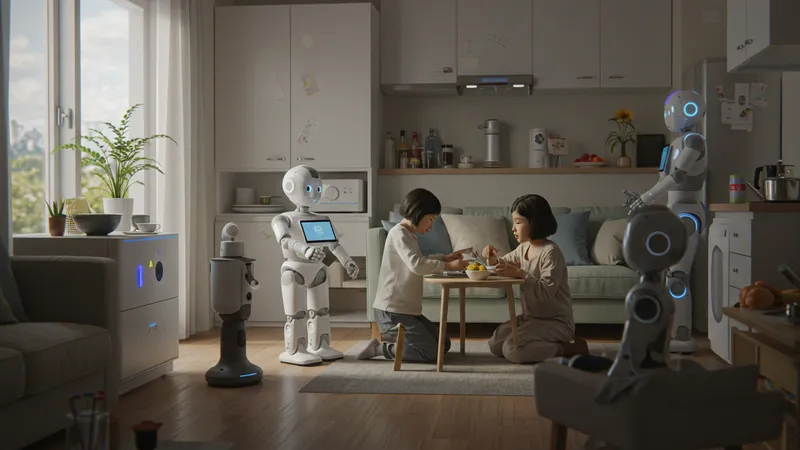
Envisaging domestic robots that cook, clean, and handle errands is no longer fantasy. This advancing lifestyle comes with conditions favoring flexibility, freeing users to focus on other pursuits. It’s a glimpse into an impending reality where human-like robots outpace any gadgets seen today. But there’s a significant twist beyond utility.
With freedom comes the necessity to reassess values and priorities. What new societal norms will emerge when humans offload mundane tasks entirely? The flexibility to pursue other activities promises unprecedented lifestyle shifts, yet how these opportunities are harnessed remains open-ended. While this evolution is exciting, it introduces a reality unclouded by current constraints.
More than redefining daily life, humanoid robots invite a cultural and global re-examination of what it truly means to live well. South Korea, as an incubator for this transformation, continues to lead the cycle of innovation. Here, the captivating journey continues, as robots shape our environment, leading into untapped territory with implications beyond the present.
Despite incredible advancements, myths and misconceptions plague humanoid robots. Contrary to popular belief, robots in South Korea are not designed to make humans obsolete; rather, they are tools for enhancing human potential. However, these myths can significantly impact public perception and acceptance.
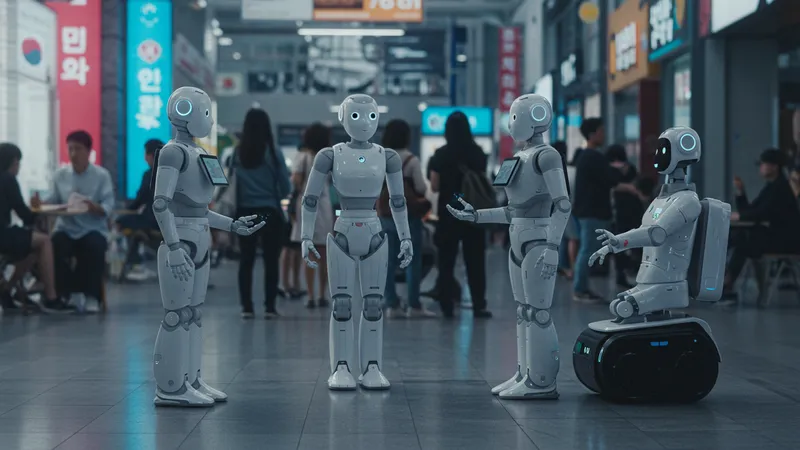
Many fear a dystopian future, yet the truth is these robots operate within clearly defined ethical boundaries and responsibilities. Robotics firms in Korea prioritize responsible development and human safety. These machines adhere to protocols ensuring cooperative functioning. What follows is crucial to understanding their societal impact.
The perception of robots as mechanical 'villains' clashes with their designed purpose. As educational and healthcare systems implement them for advancement, robots transition into roles that augment rather than confront our capabilities. These truths help dispel stereotypes, yet myths continue to circulate.
Understanding these robots through factual narratives ensures they are seen as allies, not adversaries. With revealing results from user studies and pilot programs, the awareness reshapes conversations about our future with robotics and adds clarity to the unfolding storyline — where myth meets modern marvel in equal measure.
South Korea leads a service industry evolution with humanoid robots playing pivotal roles. Machines can efficiently handle numerous routine service tasks, ranging from menu delivery in restaurants to check-in services at hotels, offering operational efficacy and guest satisfaction.
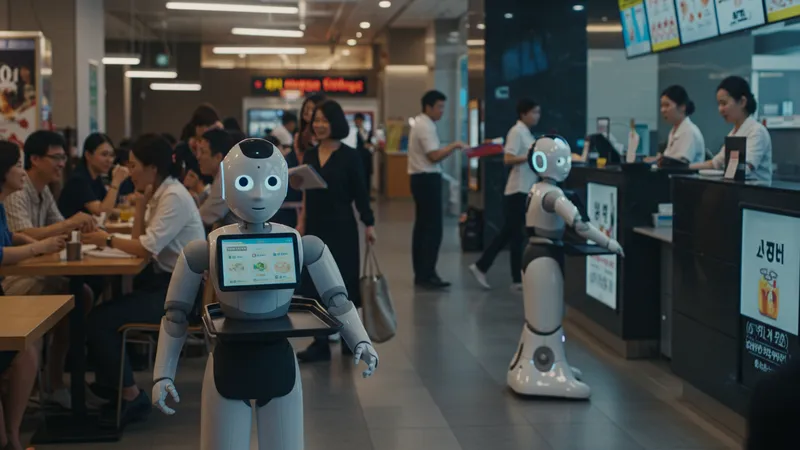
These robots complement human tactics, handling monotonous jobs while staff focus on personalized client interaction. Indeed, establishments that partnered with these machines note revenue upsurges and a more streamlined service delivery. But the advancement presents new competition paradigms.
Robots excel in maintaining consistency, a significant boon in sectors where manual errors can impact reputation and revenue. The public reception pleasantly mirrors this efficiency jump, with customers appreciating reduced wait times and improved service quality. There’s more depth to their integration.
The shift towards robotics in service is nudging a cultural acceptance of machine-assisted living. The implications of this are far-reaching, leading to society experiencing a cognitive transformation where people begin to 'serve' technology back, by teaching these robots to incorporate human values. The next phase reveals how service industry norms are evolving at breakneck speed.
South Korea’s entertainment sector witnessed a dazzling entry of humanoid robots, infusing traditional media with advanced technology. These robotic actors perform in shows, concerts, and even interactive exhibitions, pushing creative boundaries and offering audiences multi-dimensional experiences.
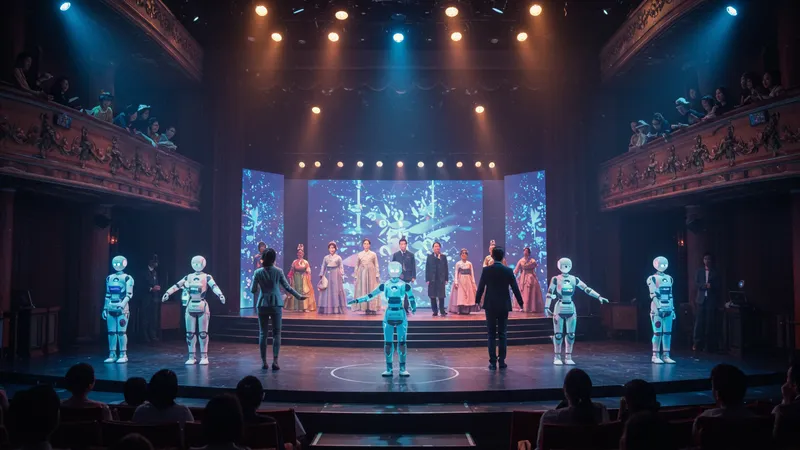
Robot entertainers bring to life possibilities only imagined in sci-fi realms, captivating viewers by their precision and charm. This challenge pushes human performers to innovate, fostering an environment of symbiotic creativity. In a few surprising cases, robots even headline shows, showcasing their technical prowess. But the sky is not the limit here.
Interactivity sets robot entertainers apart, being able to read audience emotions and react seamlessly, adding depth to performances. This engagement layer enhances viewer satisfaction, leaving lasting impressions. As these trends gather momentum, the fusion of human and robotic arts heralds new scopes of engagement. The journey has just begun.
These developments underscore a broader narrative — that technology and art are not separate journeys but converging roads. By opening doors to novel expressions, humanoid robots redefine not just entertainment but our very perception of limitless creativity. Audiences eager for greater depth find themselves included in this ongoing technological odyssey showcasing endless inspiration.
The rise of humanoid robotics in South Korea also brings environmental consequences. While automation promises optimized efficiency and reduced human error, the machines themselves require energy, materials, and maintenance. Delving into this aspect reveals how sustainable innovation is vital for the industry’s future.
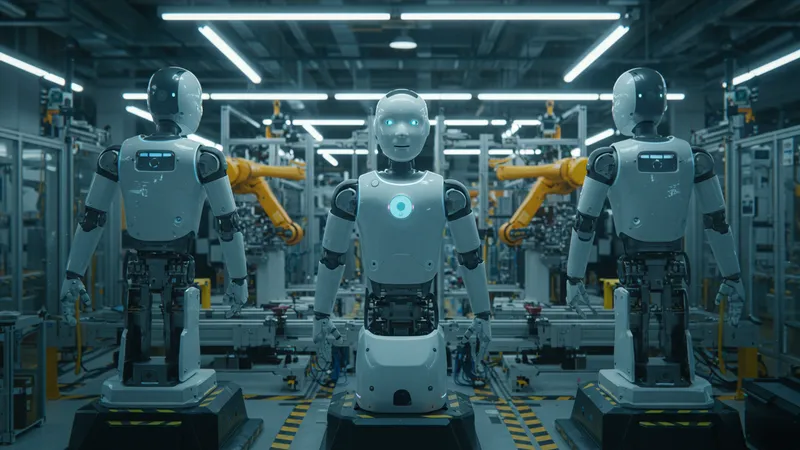
With manufacturing facilities aiming for carbon neutrality, the creation and operation of robots face scrutiny. Advances in sustainable materials are leading the charge, with robots now featuring more eco-friendly components. Yet, significant hurdles remain in large-scale implementation. But here's where it gets interesting — the innovation isn’t just mechanical.
Engineers are prioritizing energy-efficient designs, minimizing power consumption and optimizing performance. These improvements aim to reduce the ecological footprint, aligning the sector’s growth with global sustainability goals. The collaboration within environmental initiatives suggests promising pathways, but progress is ongoing.
The quest for sustainable robotics illustrates a commitment to balance technological advancement with ecological accountability. The potential for a greener robotic revolution looms large, entwining environmental responsibility with cutting-edge innovation, as South Korea’s choices shape global standards in sustainable humanoid robotics. The conclusion here may redefine future developmental strategies entirely.
In South Korea, the quest for minimalism and efficiency leads humanoid robotic design toward sleek, multifunctional forms. These machines offer an aesthetic blending form and function, intriguing design enthusiasts while fulfilling practical needs. But efficiency isn’t their only draw — there’s a hidden secret in their formation.
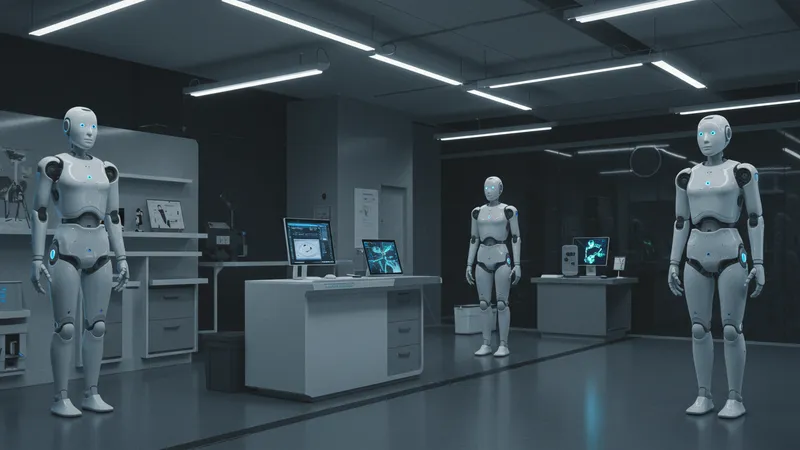
The design process emphasizes adaptability, allowing robots to serve versatile roles without compromising aesthetics. Robots exhibit modifiable exteriors and interiors tailored to specific tasks, maximizing functional utility and aesthetic appeal. But this customizable approach introduces another layer of complexity.
Engineers are enhancing modular assembly, creating designs that undergo peripheral shifts effortlessly, addressing shifting consumer preferences and industry demands. These modules function seamlessly, boosting the robots’ capability to cater to varied and evolving tasks. But the creative process doesn’t halt at design.
The combination of form, function, and adaptability can create robots with nearly boundless potential to integrate into any environment harmoniously. With these developments, South Korea leads a vibrant narrative of innovation and robust industrial evolution, redefining what humanoid robotics can achieve. The forthcoming designs promise even greater allure and functionality.
The incorporation of robots into everyday South Korean life blends seamlessly with cultural traditions and societal norms. Initially met with skepticism, robots now form part of a cultural evolution, assimilating within societal rituals and lifestyles. This shift offers a nuanced understanding of technology's role in modern identity construction.

Intertwining tradition with technology creates an enriched cultural fabric where robots embrace heritage while espousing innovation. South Korea’s approach showcases evolutionary acceptance of cutting-edge technology, a notion distinct amongst peers globally—a revelation that sparks wider cultural discussions.
The partnership between humanoid robots and human lifestyle forms a cultural dialogue, influencing identity, societal roles, and human-technology interactions. It inspires innovation grounded in tradition, challenging stereotypical depictions of robot integration. Yet, these revelations uncover untapped potential.
Viewing robots through traditional lenses imparts insights to explore relational dynamics with technology, with each societal stride offering global lessons. South Korea’s embrace encapsulates a journey of discovery, fueling a narrative where technology functions more than devices — transforming icons of cultural evolution. The next revelations hold captivating insights.
As humanoid robots gather data to enhance user experiences in South Korea, cries for transparency grow louder. Privacy concerns emerge, demanding stringent measures to protect against potential breaches. Navigating these is critical as robots become more intelligent. But there’s a deeper element driving the conversation.
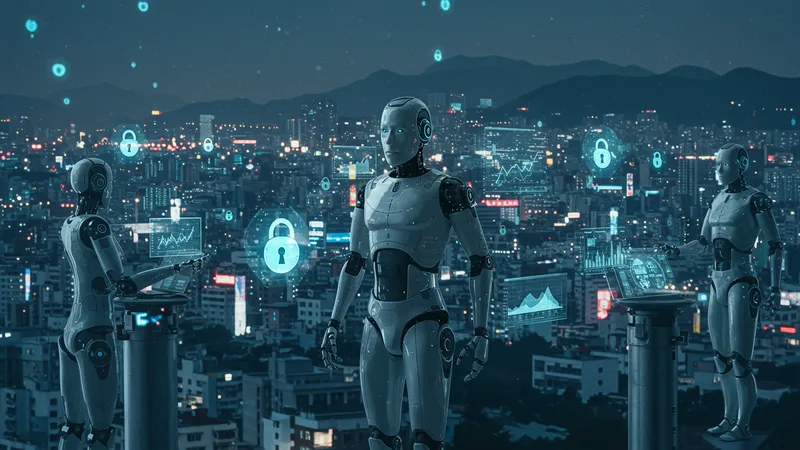
Frameworks are evolving to manage data responsibly, ensuring robots operate within ethical boundaries while safeguarding user interests. Programs undergo regular assessments and upgrades to enhance security and guarantee privacy. A hidden aspect arises in the protection of data rights.
Commitments to ethical standards are reshaping the robotics landscape, prompting roboticists to rethink operational ethics continually. Comprehensive privacy measures build trust among users, yet questions concerning ultimate data ownership persist. But this exploration leads to another hidden layer.
The balance between innovation and privacy implicates not only informed decisions but community participation. The privacy protocols could redefine societal interactions, empowering human agency within informed technology landscapes. The ongoing dialogue frames future possibilities with implications stretching well beyond immediate metrics.
In South Korea, the future blueprint for humanoid robotics heralds a new era of possibilities as technologists push boundaries. This progress isn’t about machines replacing humans but redefining possibilities by expanding potential. Each advance heralds transformational opportunities and societal shifts. But is this evolution ready for the real world?
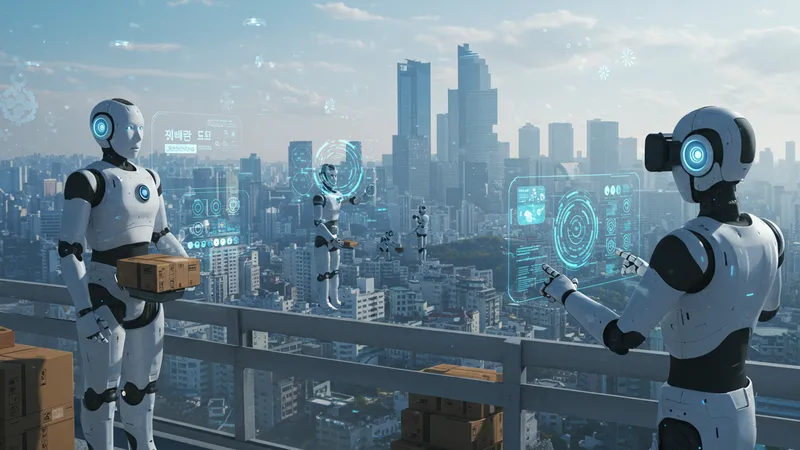
The path ahead shines bright with potential in unchartered domains, from automated logistics to augmented reality interactions. Robotics as a service offers insights into emerging business models. But understanding these developments reveals an imperative for responsible integration without overstating promises.
Continued innovation pushes boundaries, integrating AI and machine learning, transforming robots from simple tools to companions capable of enriched interaction. The challenge lies in balancing rapid innovation with adherence to ethical standards. The dichotomy prompts a deeper conversation.
The exploration seeks a collaborative future between humanoids and humans, forming narratives that set global trends. In South Korea, the journey promises an inspiring narrative that continues to challenge futurist paradigms, casting shadows of profound implications. What’s discovered could forever alter the perception of coexistence within technological ecosystems, inviting inquiry into shared human-robot experiences.
The march of humanoid robotics in South Korea leaves an indelible mark on history and paves pathways to enlightenment. These machines, while embodying engineering marvels, represent broader shifts in societal dynamics.
The realization that South Korea stands at the forefront of this humanoid evolution invites all to revisit our roles with technology and reconsider the profound impact of collaborative cohabitation. Shaping modernity's trajectory, these insights challenge borders, urging mutual reflection and sharing.